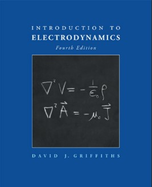Solution Found!
As a model for electric quadrupole radiation, consider two
Chapter 11, Problem 24P(choose chapter or problem)
Problem 24P
As a model for electric quadrupole radiation, consider two oppositely oriented oscillating electric dipoles, separated by a distance d, as shown in Fig. 11.19. Use the results of Sect. 11.1.2 for the potentials of each dipole, but note that they are not located at the origin. Keeping only the terms of first order in d:
(a) Find the scalar and vector potentials.
(b) Find the electric and magnetic fields.
(c) Find the Poynting vector and the power radiated. Sketch the intensity profile as a function of θ.
Questions & Answers
QUESTION:
Problem 24P
As a model for electric quadrupole radiation, consider two oppositely oriented oscillating electric dipoles, separated by a distance d, as shown in Fig. 11.19. Use the results of Sect. 11.1.2 for the potentials of each dipole, but note that they are not located at the origin. Keeping only the terms of first order in d:
(a) Find the scalar and vector potentials.
(b) Find the electric and magnetic fields.
(c) Find the Poynting vector and the power radiated. Sketch the intensity profile as a function of θ.
ANSWER:Step 1 of 5
1)First we have to find the scalar and vector potentials.
2) We have to calculate electric and magnetic fields.
3)We have to find the poynting vector and power finally we have to sketch intensity profile as a function of .
